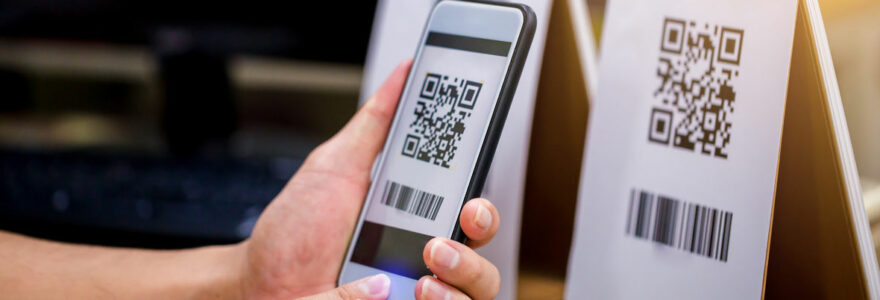In the rapidly evolving world of inventory tracking, GS1 standards and QR codes have emerged as a formidable duo for modern businesses. Through the integration of these standards into contemporary inventory systems, a new era of product tracking and identification has been ushered in. The synergy between GS1 and QR codes has significantly enhanced supply chain visibility, paving the way for optimized inventory accuracy and improved product traceability. This seamless fusion of technologies has also provided businesses with the opportunity to leverage real-time data, streamlining retail operations and paving the way for future-proof inventory management. This powerful combination is undeniably revolutionizing the way organizations handle their inventory, offering smart data capture solutions that are setting the standard for the future of inventory tracking.
Integrating gs1 standards into modern inventory systems
Understanding the nuances of GS1 standards forms the cornerstone of barcode uniformity in inventory management. The incorporation of GS1 QR codes into inventory systems enhances the precision and efficacy of product tracking within a warehouse setting. This high level of data accuracy is pivotal in modern inventory management, resulting in operational and financial advantages across various industries.
From UPC to EAN, the evolution of GS1 code technologies has profoundly impacted the landscape of inventory systems. These barcodes have become the backbone of robust stock control, aiding businesses in implementing efficient supply chain strategies. GS1 codes' role extends beyond the store shelf, impacting return management and item traceability within the retail sector. With the integration of GS1 standards in their existing supply chain, businesses can optimize their inventory management, leading to cost savings and improved customer satisfaction. Find more about this topic on goaland.com.
Qr codes: revolutionizing product tracking and identification
Amid the digital revolution, QR codes have emerged as a powerful tool, transforming the way products are tracked and identified. From barcodes to QR codes, a new era of inventory management and product tracking has begun, bringing numerous advantages to both retailers and consumers.
QR code scanners have revolutionized shopping experiences, both in-store and online. Each quick scan reveals a wealth of data about a product, from its origin to its journey through the supply chain, enhancing transparency and fostering consumer trust. The integration of QR codes with inventory management systems has ushered in a new level of efficiency in item location identification, ensuring precise tracking of items across the supply chain.
Understanding barcode standards like UPC and EAN is essential in this transition towards QR codes. These number-based identification systems laid the groundwork for global product identification. However, QR codes, with their ability to store a larger amount of data, have taken this identification process to a whole new level. Through a simple scan, these codes provide comprehensive information about a product, transforming the way businesses manage their stock and enhancing consumers' shopping experiences.
With the rise of QR codes, the future of product tracking and identification looks promising. The technology behind these codes is robust, reliable, and capable of meeting the evolving demands of modern inventory management.
Enhancing supply chain visibility with gs1 and qr code synergy
Increased visibility of the supply chain gets a significant boost through the application of GS1 and QR code technologies. The importance of GS1 standardization for QR code interoperability facilitates global product tracking. The integration of GS1 QR codes enhances real-time stock management, contributing to a reduction in inventory errors.
Optimizing Inventory Accuracy with GS1 Barcode Integration
The role of GS1 barcodes, such as UPC and EAN, is paramount in inventory tracking. Their integration into inventory systems improves the accuracy of stock counts, enhancing the location and movement of items within warehouses and distribution centers. GS1 QR codes play a vital role in optimizing inventory location and movement, resulting in a more efficient supply chain management.
Improving Product Traceability Through QR Code Application
Product traceability gets a significant enhancement through the application of GS1 QR codes. The enriched data provided by these codes plays a crucial role in improving supply chain management decisions. The combination of GS1 and QR technologies for item tracking from manufacturer to consumer provides increased visibility of the supply chain.
Leveraging Real-Time Data for Efficient Supply Chain Management
Real-time data is a powerful tool for efficient supply chain management. GS1 and QR code synergy in traditional inventory tracking systems presents challenges, but also offers solutions. The rich information provided by GS1 QR codes helps in making informed decisions, ultimately leading to an efficient management of the supply chain.
GS1 and QR code synergy holds the key to future advancements in supply chain visibility and management.
Streamlining retail operations through advanced scanning technologies
Advanced scanning technologies are transforming retail operations, proving instrumental in streamlining inventory management. By employing GS1 barcodes and QR codes, businesses have the capacity to precisely track products within their stores. These modern scanners are revolutionizing both in-store and online shopping experiences, offering a wealth of data and information that was previously inaccessible.
Standardisation of UPC and EAN codes is the key to global interoperability of retail operations. By adopting these standardized barcodes, businesses ensure their products can be recognized and tracked anywhere in the world. This universal recognition facilitates real-time analysis of consumer trends and accurate stock forecasting, thereby enhancing retail management.
Despite the benefits, integrating advanced scanning systems presents challenges, especially for small retail businesses. However, with proper guidance and resources, these systems can be implemented successfully, offering a comprehensive solution for managing stock and tracking items within the store. Advanced scanning technologies are integral to the future of retail, promising to optimize operations and transform how businesses manage their inventory.
Future-proofing inventory management with smart data capture solutions
In the realm of modern inventory tracking, the integration of barcodes and QR codes into cloud-based inventory management systems has revolutionized the way product items are tracked. Through the evolution of scanner technologies, data capture has become faster and more precise, enhancing the overall efficiency of inventory management. The standardization of codes, like UPC and EAN, plays a significant role in facilitating effective global inventory management, ensuring consistency and ease of tracking across various platforms and regions.
In addition to this, the implementation of intelligent software solutions has enabled predictive analysis of stock levels, providing businesses with valuable insights for inventory management. These smart data capture solutions pave the way for future-proofing strategies, anticipating the evolution of inventory management needs and preparing businesses for the future. The use of mobile technologies has further enriched the domain by offering real-time and flexible inventory management. These tools are used for scanning barcodes and QR codes, allowing for instant data capture and updates to the inventory, thereby enhancing the overall productivity and efficiency.

